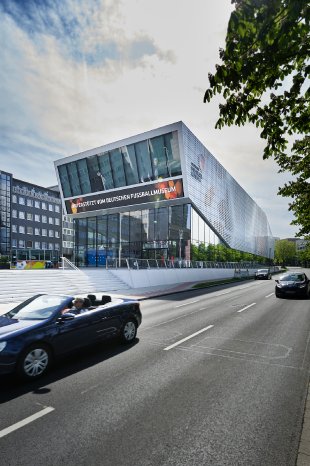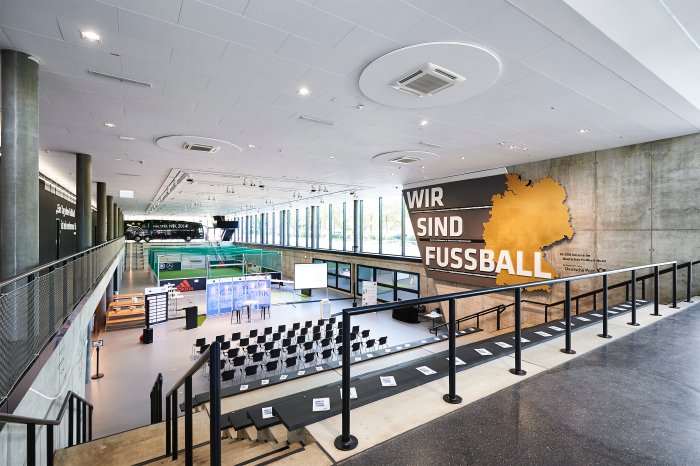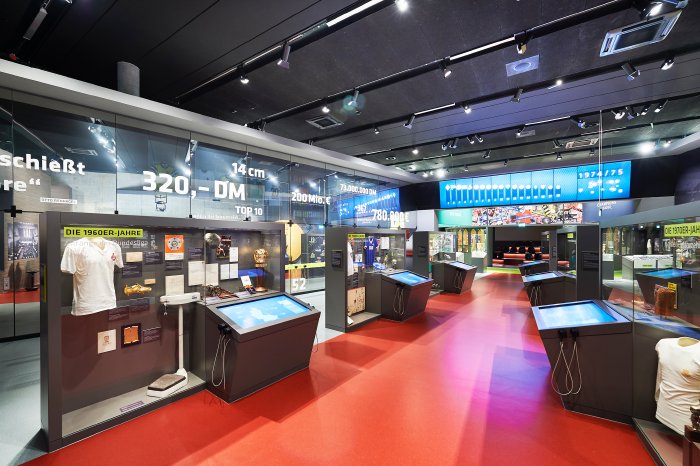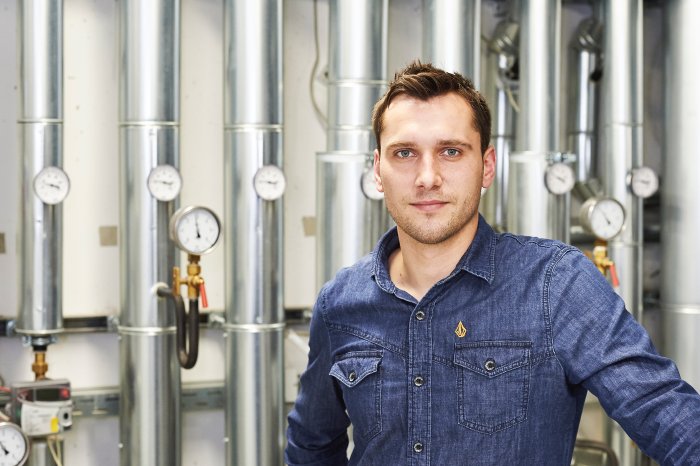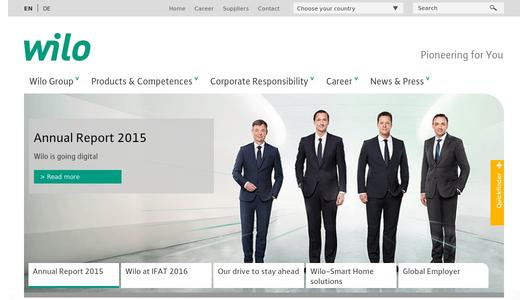“It used to be like a chicken shop on a hot day”, Thomas Müller comments on the finals against France in the baking heat of the Estadio Maracana in Rio de Janeiro. The question of how the players would cope with the soaring temperatures at the 2014 world championships in Brazil was an issue widely discussed in the media at the time. The team from the cooler Germany obviously had no major problems adjusting. But when the triumph of Brazil is relived in the German Football Museum, the visitors surely appreciate being spared such intense heat. This is why the different areas have been fitted with an adjustable distribution of heating and cooling.
Using the full “breadth of the field”
The requirements for the air-conditioning of this “memorial hall of football” could not have been more varied: A glazed frontage, several metres in height, reveals first impressions of the world of German football – and must therefore be kept clear of fog at all times. On the museum level, fans are told exciting stories around the German national team, the federal league clubs and the most famous players – and those stories draw in the attention of the curious visitors. A further level presents the atmospheric ambience perfectly suited for events and galas for a variety of occasions, ranging from elegant dinners to relaxed parties. Fans can trial their newly acquired football wisdoms right there on the playing field, which is located on the basement level of this multifunctional arena – and they will get a good workout at the same time. Sporting and culinary indulgence is offered on the daily menus of the many catering outlets, resembling the current daily menu of the national team – a place to take a break and relax.
In order to provide ideal climate conditions for this wide range of different activities, the German Football Museum uses the entire “line-up” of technical options available. Heating energy is delivered by a 400 kW connection to district heat. Cooling is generated by two cold water chillers of 300 kW power each. To save as much energy as possible, they are additionally connected to a cooling battery with direct evaporation. The ventilation system is additionally equipped with an adiabatic cooling system. Heat and cold is distributed by separate systems, adjusted to the type and profile of the respective usage: via the ventilation ducts, supplemented by surface temperature control, trench heaters or radiators.
All heating and cooling circuits are centrally controlled by a building management system (BMS). It also controls the circulators for each circuit (“Wilo Stratos”, rated connection DN 65) in a temperate- and time-dependent manner. This ensures that an adequate yet economic and timely yet never unnecessary temperature is maintained in the individual areas of the building.
The “tactical line-up” of heating and cooling distribution
The exhibition areas on the first and second level are heated and cooled by the ventilation system. Trench heaters are installed in the foyer. They heat the air along the high glazed surfaces. This deflects the cold air draughts during the colder months and therefore prevents fogging of the windows. The multifunctional arena has an additional underfloor heating system fitted, which is also used for passive cooling. This area caters for both elegant galas as well as all kinds of “action”, e.g. when it has been converted to a football field. And because the large glazing elements will generate the corresponding heat influx during summertime, recessed cooling cassettes are installed in the ceiling for peak load cover, in addition to the chilled supply air inflow. Ancillary rooms are heated by conventional radiators. Depending on the temperature level, Wilo pumps supply the required amount of energy to the individual heating and cooling circuits.
The integration of the pumps into the BMS is a crucial element for Andreas Heine, Technical Director of the German Football Museum: “The request for heating or cooling is controlled by the outside temperature as well as by the preset regular opening hours of the museum. We nevertheless must be able depart from this programming for special events.” And thanks to the BMS, this can be done by a simple click or touch: The air-conditioning and heating systems are controlled via system diagrams displayed on touchscreens and installed in the central engineering room. Temperature and time settings for each usage profile can be adjusted from the BMS office terminals. “In the case of an evening event, for example, the dates, times and desired temperature levels are entered into the BMS schedule. Lead times required to reach the preset room temperature precisely at the right moment are calculated as a function of the outside temperature and determined by the BMS automatically. We are however still able to intervene manually”, Mr Heine describes the simple handling of the complex system technology. Areas of the building not used for events outside of opening hours automatically switch to the regular reduced, energy-saving temperature levels.
Quick transitions thanks to Wilo technology
“The highly efficient Wilo pump technology makes a significant contribution to limiting the primary energy consumption of the Football Museum”, Wilo Sales Director (DACH region) Christian Kruse explains. “A total of 21 circulators have been installed. 15 pumps are used for heating distribution, six for cooling.” The glandless circulators of the “Wilo-Stratos”-series (see box) feature an energy efficiency index of ≤ 0.20. This is the current benchmark set out by the Ecodesign Directive (ErP). Moreover, the pumps exploit the potential savings of the continuously adjustable EC motors by a new functionality. It is called “Q-Limit” and limits the volume flow in each distribution circuit to a preset value between 25 and 90 percent of the maximum flow volume. When the preset value is reached, the pump will adjust its pump curve to keep in line with the limit. “This allows for a quick and demand-driven adjustment of the flow rate”, Christian Kruse offers. “At the same time, inefficient heating and cooling scenarios will be sustainably avoided.”
Conclusion
In the words of Lukas Podolski: “Football is like chess – only without the dice.” Following this logic, keeping temperature at the desired levels has everything to do with elaborate chess moves and nothing to do with chance. What can however happen is that the hearts and spirits of the fans heat up in view of the many trophies and triumphs on display. This would however be an intended effect.
